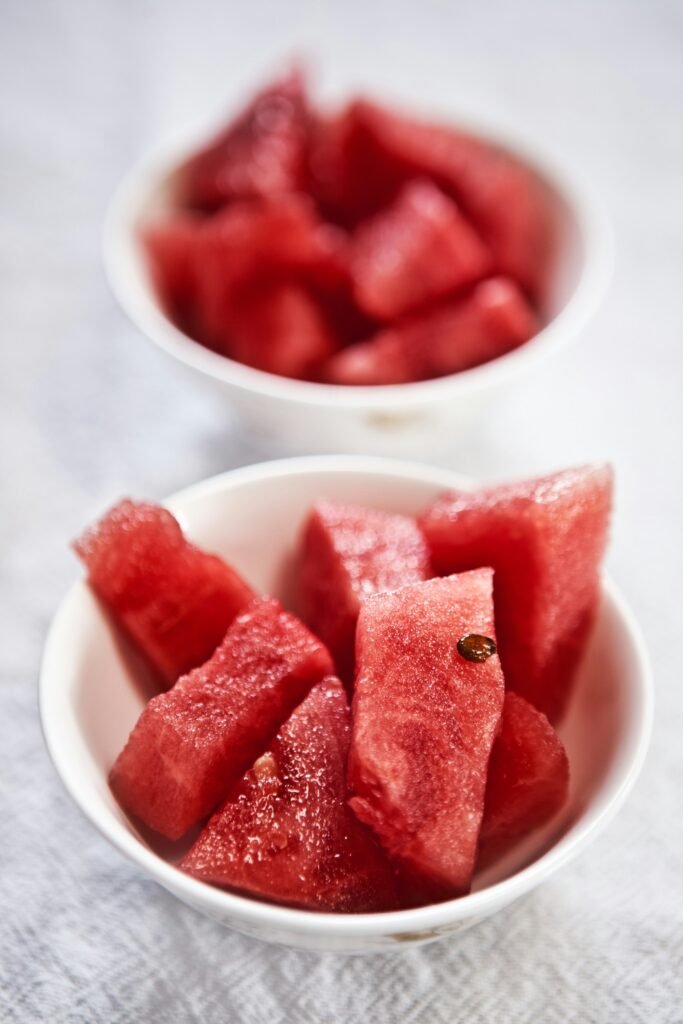Are you struggling to get your children excited about eating healthy? If so, you’re not alone. Many parents find it challenging to convince their little ones to choose nutritious foods over sugary snacks. But fear not! There are plenty of creative ways to make healthy eating fun for your children. By incorporating interactive activities, colorful presentations, and tasty recipes, you can transform mealtimes into enjoyable experiences that promote good nutrition. Let’s explore some delightful ideas that will have your kids eager to gobble up their fruits and vegetables in no time!

Introduce Variety of Foods
Include a Rainbow of Colors
One of the best ways to make healthy eating fun for your children is by including a rainbow of colors in their meals. Instead of presenting them with a plate full of bland looking food, try to incorporate a variety of colorful fruits and vegetables. For example, you can serve a salad with a mix of vibrant greens, red and yellow bell peppers, purple cabbage, and orange carrots. Not only will these colorful foods make the meal visually appealing, but they also provide a wide range of nutrients that are essential for your child’s growth and development.
Try Different Textures
Another way to make healthy eating fun is by introducing your children to different textures. Kids can sometimes get bored with repetitive textures, so it’s important to change things up and keep their taste buds guessing. Consider including foods with a variety of textures, such as crunchy carrots, smooth avocado, chewy dried fruits, and creamy yogurt. By combining these textures in a single meal, you’ll not only enhance the overall eating experience but also expose your children to a wider range of food options.
Experiment with New Flavors
Encourage your children to try new flavors by incorporating them into their meals. Instead of sticking to the same old flavors, introduce them to new herbs, spices, and seasonings. For example, you can try adding fresh basil to their pasta dishes or sprinkling cinnamon on their oatmeal. By experimenting with new flavors, you’ll not only add excitement to their meals but also expand their palate and help them develop a more adventurous approach to eating.
Make Meals Interactive
Engage Kids While Cooking
Getting kids involved in the cooking process can make mealtimes more interactive and exciting. Encourage your children to help out in the kitchen by assigning them age-appropriate tasks. For younger kids, they can help wash vegetables, tear up lettuce for salads, or stir ingredients in a bowl. Older kids can assist with measuring ingredients, chopping fruits, or even following simple recipes. By involving them in the cooking process, they will feel a sense of accomplishment and be more invested in the final meal.
Involve Children in Grocery Shopping
Another way to make meals interactive is by involving your children in grocery shopping. Take them along to the supermarket and let them pick out fruits, vegetables, and other healthy ingredients. Encourage them to choose items they find interesting or that they would like to try. This not only gives them a sense of ownership over their meals but also exposes them to different food options and encourages them to make healthy choices.
Create DIY Meal Stations
A fun and interactive way to make meals more exciting is by creating DIY meal stations. Set up a taco bar where your children can assemble their own tacos with a variety of healthy ingredients. Alternatively, you can create a build-your-own sandwich station or a make-your-own pizza night. By giving your children the freedom to choose and create their own meals, they will feel more engaged and excited about eating healthy foods.
Present Food Creatively
Use Food Art
One creative way to make healthy eating fun is by using food art. Turn ordinary fruits and vegetables into fun and appealing shapes. For example, you can slice a watermelon into star shapes or use a cookie cutter to cut sandwiches into different shapes. You can also arrange colorful fruits and vegetables into a picture or design on a plate, creating a visually appealing and exciting meal for your children. By bringing creativity into the presentation of food, you can make healthy eating more enjoyable for your little ones.
Make Funny Faces
Another fun way to present food creatively is by making funny faces out of healthy ingredients. Use sliced fruits and vegetables to create eyes, noses, and mouths on a plate. Get creative and let your children use their imagination to bring the funny faces to life by adding other ingredients as hair or accessories. This not only adds an element of playfulness to mealtime but also encourages your children to eat their fruits and vegetables.
Arrange Food in Fun Shapes
Children are often more inclined to eat foods that are presented in fun shapes. Use cookie cutters to create interesting shapes out of sandwiches, fruits, and vegetables. You can also use a spiralizer to create curly strands of vegetables or form rice into cute animal shapes. By making their food visually appealing, you’ll capture their attention and make healthy eating a more enjoyable experience.
Create Healthy Snack Options
Prepare Nutritious Bites
When it comes to healthy snacking, it’s essential to prepare nutritious bites that are both tasty and satisfying. Instead of reaching for pre-packaged snacks, try making your own at home. For example, you can make energy balls using dates, nuts, and seeds, or bake homemade granola bars using oats, honey, and dried fruits. These homemade snacks are not only healthier than store-bought options but also allow you to control the ingredients and ensure they are free from artificial additives or excessive sugar.
Make Fruit and Veggie Kabobs
Another fun and healthy snack option is to make fruit and veggie kabobs. Skewer colorful fruits and vegetables onto bamboo sticks and serve them as a refreshing snack. Let your children participate in the process by allowing them to choose which fruits and vegetables they want on their kabobs. This interactive snack option not only encourages healthy eating but also provides an opportunity for your children to practice their fine motor skills.
Offer Dips and Salsas
Children often enjoy dipping their food into various sauces and dips. Instead of using store-bought options that are often high in unhealthy fats and sugars, prepare your own healthy dips and salsas. You can make a creamy yogurt-based dip by mixing plain yogurt with herbs and spices, or create a fresh tomato salsa using diced tomatoes, onions, cilantro, and lime juice. These homemade options not only add flavor to your children’s snacks but also provide additional nutrients without the unwanted additives.

Turn Mealtime into a Game
Food Bingo or Tic-Tac-Toe
Make mealtime more engaging by playing food-themed games like Food Bingo or Tic-Tac-Toe. Create a bingo card or a tic-tac-toe grid with different fruits, vegetables, or other healthy food options. Encourage your children to mark off the foods they eat during the meal or try to get three in a row for tic-tac-toe. This turns mealtime into a fun game and motivates your children to try different foods in order to win.
Guess the Ingredient
Challenge your children by playing “Guess the Ingredient” during mealtime. Prepare a dish that includes multiple ingredients and have your children guess what each ingredient is. This game not only helps develop their taste buds and food knowledge, but it also adds an element of excitement to the meal. Offer small rewards or praise for correct guesses, encouraging your children to engage in the game and explore new flavors.
The 5-Second Rule
The 5-Second Rule is a fun and fast-paced game that can be played during mealtime. Give your children five seconds to name a healthy food within a specific category or color. For example, you can say “name a green vegetable” or “name a fruit that starts with the letter ‘B'”. This game not only encourages quick thinking but also prompts your children to recall and name healthy food options. Make it a family game and take turns being the one to ask the questions, adding an element of friendly competition and excitement to the meal.
Get Kids Involved in Growing Food
Start a Backyard Garden
One of the best ways to get your children excited about healthy eating is by involving them in the process of growing their own food. Start a backyard garden where they can plant and nurture their own fruits, vegetables, or herbs. Let them choose what to grow and assign them age-appropriate gardening tasks like watering, weeding, or harvesting. This hands-on experience not only teaches them about where their food comes from but also instills a sense of responsibility and pride in the food they’ve grown.
Plant Herbs or Vegetables in Pots
If you don’t have space for a full-fledged garden, you can still get your children involved in growing food by planting herbs or vegetables in pots. Choose a few herbs like basil, mint, or parsley, or opt for fast-growing vegetables like cherry tomatoes or lettuce. Let your children take care of the plants by watering them regularly and watching them grow. This mini-garden setup allows them to witness the entire growth process, from planting the seeds to enjoying the fresh produce, fostering a greater appreciation for healthy foods.
Visit Local Farms or Farmers’ Markets
Another way to get your children engaged in food production is by taking them to visit local farms or farmers’ markets. Show them where their food comes from and introduce them to the farmers who grow it. Let them experience the abundance of fresh produce and encourage them to ask questions. This firsthand experience not only connects them to the food they eat but also helps them understand the importance of supporting local agriculture and making healthy food choices.

Organize Food Challenges
Produce a Cook-Off Competition
Organize a family cook-off competition to make healthy eating more exciting. Assign a theme or a specific ingredient that everyone has to incorporate into their dish. Encourage your children to come up with their own recipes or help them find healthy recipes online. Set a time limit and let the cooking begin! Afterward, have everyone taste and judge each dish based on taste, presentation, and creativity. This friendly competition encourages your children to experiment with new flavors and ingredients while building their culinary skills.
Create a Healthy Recipe Contest
Promote healthy eating by creating a healthy recipe contest within your family. Have each family member come up with a unique and nutritious recipe, from main dishes to snacks and desserts. Encourage your children to get creative and think about how to make their dishes both healthy and delicious. Make it a month-long contest where each week revolves around a different category. At the end of the month, have everyone vote for their favorite recipes in each category and celebrate with a family cooking day where you prepare the winning recipes together.
Have a Family Smoothie Challenge
Smoothies are a great way to pack in a variety of fruits and vegetables into one delicious drink. Have a family smoothie challenge where each member can create their own unique smoothie recipe. Provide a selection of ingredients like fruits, vegetables, yogurt, and various add-ins like nuts, seeds, or honey. Let your children experiment with different combinations and flavors. Give bonus points for creative names and presentation. This fun challenge not only encourages healthy eating but also promotes a sense of creativity and teamwork within the family.
Make Food Education Fun
Invite Kids to Explore Food Groups
Educate your children about the importance of balanced nutrition by inviting them to explore different food groups. Create a chart or a poster that showcases the five main food groups, namely fruits, vegetables, grains, protein, and dairy. Have your children identify foods that belong to each group and discuss their nutritional benefits. This interactive activity helps them understand the importance of eating a variety of foods from each group and how they contribute to their overall health.
Teach About Nutrients and Benefits
Take food education a step further by teaching your children about the nutrients and benefits of various healthy foods. Choose one nutrient at a time, such as fiber, calcium, or vitamin C, and explain its importance and the foods that contain it. Show them how these nutrients contribute to their growth, energy levels, and overall well-being. Use visual aids like charts or diagrams to make the learning experience interactive and engaging.
Watch Engaging Cooking Shows or Videos
Make food education fun by watching engaging cooking shows or videos with your children. Look for shows or channels that are specifically geared towards kids and focus on healthy eating. These shows often include interactive segments, educational content, and easy-to-follow recipes. Watch the shows together and discuss the different ingredients and techniques used. This not only helps your children learn about healthy eating but also exposes them to a variety of foods and cooking styles.
Establish Healthy Eating Routines
Set Regular Meal Times
Establishing regular meal times is essential for creating a healthy eating routine. Set specific times for breakfast, lunch, dinner, and snacks, and try to stick to them as closely as possible. This routine helps regulate your child’s hunger cues and ensures they are getting the nutrients they need throughout the day. Avoid scheduling meals too close to bedtime, as this can interfere with their sleep patterns. Consistency is key in developing healthy eating habits.
Designate a Dedicated Dining Area
Create a designated dining area where your family can gather to enjoy meals together. This space can be a dining table or a cozy corner in your kitchen. Make it a rule to eat meals at this designated area rather than in front of the TV or computer. By having a dedicated space for meals, you create a sense of importance and structure around eating, making it a more mindful and enjoyable experience.
Encourage Mindful Eating
Encourage mindful eating by teaching your children to pay attention to their food and the act of eating. Encourage them to chew their food properly, savor each bite, and listen to their bodies’ hunger and fullness cues. Discourage distractions during mealtime, such as screens or toys, and encourage them to engage in conversation or reflect on their day while eating. By practicing mindful eating, your children will develop a greater appreciation for the food they eat and be more in tune with their bodies’ needs.
Lead by Example
Demonstrate Healthy Habits
The best way to encourage your children to eat healthily is by leading by example. Show them that healthy eating is important by demonstrating healthy habits yourself. Make sure to include a variety of fruits, vegetables, whole grains, and lean proteins in your own meals. Be vocal about why you choose these foods and how they make you feel. Your children are more likely to adopt healthy habits when they see you practicing them consistently.
Eat Together as a Family
Make it a priority to eat meals together as a family as often as possible. Family meals not only strengthen bonds but also provide an opportunity to model healthy eating habits. Sit down together, set the table, and engage in conversation during mealtime. Encourage your children to share their thoughts and experiences while enjoying the meal together. Eating as a family creates a positive association with healthy eating and fosters a sense of togetherness.
Avoid Negative Food Talk
Avoid negative food talk or labeling certain foods as “bad” or “unhealthy”. Instead, focus on the positive aspects of healthy eating and the benefits it brings. Teach your children that all foods can be enjoyed in moderation and that balance is key. Encourage them to listen to their bodies and make mindful choices rather than promoting strict rules or guilt around food. By creating a positive and inclusive environment, you foster a healthy relationship with food and empower your children to make their own choices.
Losing weight and keeping it off can be a challenge. I’m here to show you good-tasting foods and drinks that help you lose weight, and are enjoyable to eat.




